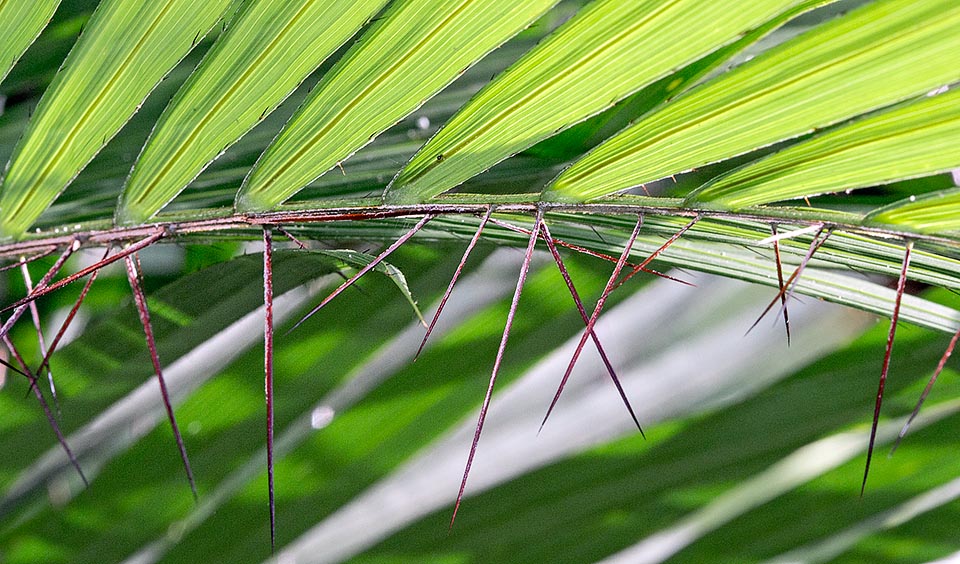Family : Arecaceae

Text © Pietro Puccio

English translation by Mario Beltramini
The species is native to Bolivia, Colombia, Ecuador, North-western Brazil and Peru where it grows in the pluvial forests, mainly along the water streams and in areas periodically flooded, at low altitude.
The generic name comes from the Greek substantive “βάκτρον” (bactron) = stick, support, with reference to the use of the stems of some specis belonging to this genus as sticks; the specific name is the Latin adjective “concinnus, a, um” = elegant.
Common names: marayaù (Bolivia); marajá, marajá pupunha, mumbaca (Brazil); caña brava, marayá (Colombia); chontilla (Ecuador); neja, ñejilla, palmera cespitosa, uyainim (Peru).

Bactris concinna forms dense tufts in the pluvial forests of Bolivia, north-western Brazil, Colombia, Ecuador and Peru, mainly along the water streams in periodically flooded areas, at low altitude. Erect or slightly arcuate stems, of 2-5 cm of diameter and 4 m tall with 7-8 m specimens © Giuseppe Mazza
It reproduces by seed, in loam rich of organic substance maintained constantly humid at 26-28 °C, with germination times of 5-6 months, and by division.

Spines everywhere, even on the foliar laminae. The female flowers ripe before the male ones to foster the crossed pollination. The fruits are ovoid, edible, blackish purple, 2-4 cm long and 1-2 cm of diameter, containing only one seed. The roots are used for decoctions in the cold diseases © Giuseppe Mazza
Synonyms: Bactris concinna var. inundata Spruce (1869); Bactris concinna subsp. depauperata Trail (1876); Pyrenoglyphis concinna (Mart.) Burret (1934); Pyrenoglyphis concinna var. depauperata (Trail) Burret (1934); Pyrenoglyphis concinna var. inundata (Spruce) Burret (1934).
→ For general notions about ARECACEAE please click here.
